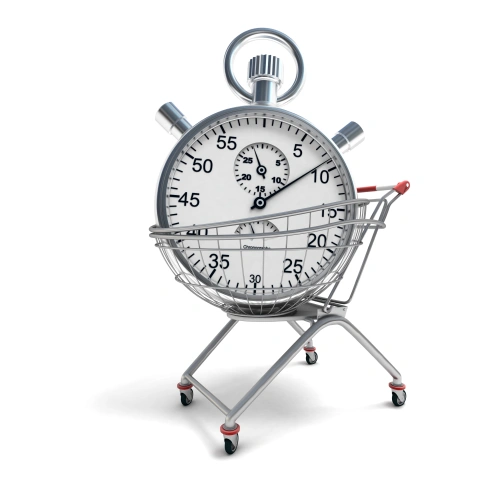7 Strategies to Achieve Competitive Advantage
What Is a Competitive Advantage?
A competitive advantage is a sustainable advantage that a business has over competitors that enables it to succeed in the market.
Competitive advantage is achieved by several factors. Two of the most common sources of differentiation are when a business either has a cost advantage, where that business is able to produce its products at a lower cost than competitors, or the business has some kind of differentiation advantage where a business is able to differentiate its products from the competition so that customers get superior value and premium features.

These points are discussed in detail in the following section.
The problem with business strategy is that it is very difficult to implement. When you talk about the idea of competitive advantage, it sounds pretty simple.
In theory, all you need to do is identify the attribute that is driving the most profit for your business, but when you try to implement this, you realize that there are myriad options to choose from.
What you need to do is pinpoint the area where you have a sustainable competitive advantage. In layman’s terms, competitive advantage is an attribute that allows you to outperform your competition.
Mentioned below are a few strategies that will help your business sustain a competitive advantage over the competition.
1. Develop Cost Leadership
Cost leadership is a competitive advantage achieved by providing the lowest cost of operation in your industry. If you can become the lowest-cost producer in the market, you will definitely get a competitive edge over your competition.
Typically brands try to sell their product at prices lower than their competitors. This way, they will win price-sensitive customers.
Given that the price-sensitive customers are the absolute majority, they can win a sizable market share and sell a lot of units of the goods they’re selling. This generally means your business gets lower margins but does not necessarily have to be the case.

Many businesses use creative ways to lower production costs without lowering their profit margins.
One of the easiest and most common ways to lower per-unit costs is to leverage economies of scale. The more units you sell, the lower is its unitary cost.
Some companies excel at economies of scope. If they operate in more than one business, they can often achieve economies of scope, which pushes down their cost even lower.
Economies of scope consist of proportionate savings gained by producing two complementary products. The cost of producing the same goods under the same roof is lower than producing them separately.
Process design is another cost driver. You can reduce costs from a change in the way a process is being carried out.
If you can find a way to optimize that process or replace it with new ones, you might see a dramatic cost reduction.
You do not only have to differentiate your pricing based on cost leadership. You may consider a “blue ocean” pricing strategy, where you can identify market segments in-between “premium features” and “cost leadership.”
In these segments, you will have new customers, and you can price your products accordingly.
2. Establish Solid Differentiation Strategy
Differentiation techniques are attractive whenever the buyer’s needs and preferences are too diverse to be fully satisfied by a standardized product or service.
The main idea behind the differentiation strategy is to provide unique products or service attributes that a wide range of buyers finds appealing and worth paying for.

You need to study buyers’ needs carefully and behaviors to learn what they think has value and what products they are willing to pay for.
You must then include these features to clearly set yourself apart from rivals lacking such product or service attributes. Successful differentiation will allow you to command premium prices, increase unit sales, and gain customer loyalty.
You can pursue a differentiation strategy from several different angles like the unique taste, multiple features, one-stop-shop, superior service or design, reliability, and quality.
3. Enhance Your Competitive Edge
Once you have achieved a competitive edge, you need to spend some effort to enhance it further.
This way, you create an even bigger distance between you and your competitors. This strategy’s core use is to keep in place the competitive advantage attained by cost leadership and differentiation.
It makes sure that there is no real opposition from your business’s competitors and widens the competitive gap between your business and your competitors.
4. Establish Strategic Alliances
Companies in all sorts of industries have decided to form strategic alliances. To complement their accumulation of resources and capabilities and strengthen their competitiveness in domestic and international markets. A strategic alliance can be defined as a formal agreement between two or more companies to work cooperatively towards a common objective.
A surprisingly large number of organizations never live up to expectations. More than 60% of alliances end up in failure.

There are several causes for this high divorce rate between alliances, i.e., diverging objectives and priorities, an inability to work together, changing conditions, the emergence of more attractive paths, marketplace rivalry between one or more alliances.
5. Master Your Niche
In a constant battle to gain a competitive edge over competitors, many businesses make the mistake of doing too many things at once. They try to tap into different markets that are outside of their niche. This will do you more harm than good.

When you try to expand outside of your niche, you increase your chances of failure. You can’t jump into a different niche without any prior experience just because it seems more lucrative from the outside.
This can have a negative impact on your entire business, as failures will consume time and resources; that could have been used elsewhere.
Instead, focus all your resources and efforts on your niche and become a master in it. The key to success is tapping into a very specific target market.
This makes it easy for you to keep track of everything that is going on with your business and what your competitors are doing. You can focus on your target audience and develop a stellar relationship with your customers.

You need to concentrate on a narrow buyer segment or market niche and outcompete rivals by having lower costs and unique products.
This will allow you to service your niche members better than the competition.
6. Emphasize Your Unique Value Proposition
Your businesses’ unique value proposition is the basis for every message you’re sending out. If you own the only shoe repair service in town, your unique value proposition is being the only shoe repair service in town.
However, if there are fifteen shoe repair shops, you need to be the one that stands out in the crowd somehow.
Identifying your unique value proposition is not an easy task because it’s not just about value. It is about being unique.

Think about what it is that you bring to the table. Sometimes that can be hard to do; an outsider’s perspective is always helpful.
You can ask some of your best clients, people, that have done business with you, and know your brand.
Unfortunately, there is always going to a portion of the population that ignores you, no matter how good your unique value proposition is. In those cases, those consumers just don’t need what your company has to offer right now.
However, if you’re memorable, they will come back to you when it matters, or they might just end up being a surprise referral source in the end.
7. Build Lasting Customer Relationships
Like any relationship, the relationship between a business and its customers needs nurturing. Your customers play a main role in the success of your business, and naturally, they’re going to have some expectations.
You need to make sure that you deliver on those relationships and develop those relationships as our business develops. The point is to create a deep bond that lasts for a long time.
So that the customers keep coming back to buy your products and services, remember, it’s far cheaper to retain previous customers than to start from scratch with someone new. Plus, happy customers also talk about your products or services to their friends and family, which makes them brand advocates.

Long Term relationships are built with customers over time and through regular interactions and possibly with an emotional connection. These customers are die-hard fans who support your company for many years.
Loyalty programs are a great way to build long term relationships; they reward the customers for their purchases and make switching brands a bit more costly, so the customer returns again and again.
Gym memberships are notorious for this. They give you a discount for bringing in a friend, but to cancel your membership, you have to go all the way into their offices and do a bunch of tedious paperwork that nobody wants to do.
Conclusion
Winning a sustainable competitive advantage over rivals with any strategy generally relies on how many competitively valuable capabilities you have that rivals can’t match.
A company achieves a sustainable competitive advantage when a considerably large number of customers prefer its products or services over the competition.
Make sure that your managers are always willing to modify the strategies as new opportunities and ideas come along.
This is a never-ending process, and to sustain your competitive advantage for an extended period of time, you need to keep on coming up with new strategies that complement your business model and help you stay ahead of your competitors.
Take Action!
Start Improving Your Business Today!
Need our help in leveraging your competencies, and enhancing your competitive advantage?
About the Author

Eugen Spivak is a multi-award-winning author, business strategist, and a business coach. Eugen is the founder of the Canadian Institute of International Business, an organization dedicated to bringing practical and hands-on business education for modern business leaders.


